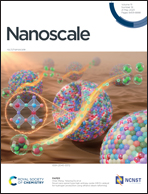Tuning innate immune function using microneedles containing multiple classes of toll-like receptor agonists†
Abstract
Microneedle arrays (MNAs) are patches displaying hundreds of micron-scale needles that can penetrate skin. As a result, these arrays efficiently and painlessly access this immune cell-rich niche, motivating significant clinical interest in MNA-based vaccines. Our lab has developed immune polyelectrolyte multilayers (iPEMs), nanostructures built entirely from immune signals employing electrostatic self-assembly. iPEMs consist of positively charged peptide antigen and negatively charged toll-like receptor agonists (TLRas) to assemble these components at ultra-high density since no carrier is needed. Here we used this technology to deliver MNAs with antigen and defined ratios of multiple classes of TLRa. Notably, this approach resulted in facile assembly and corresponding signal transduction through each respective TLR pathway. This control ultimately activated primary antigen presenting cells and drove proliferation of antigen-specific T cells. In related in vivo vaccine studies, application of MNAs resulted in distinct T cells response depending on the number of TLRa classes delivered with MNAs. These MNAs technologies create an opportunity to deliver nanostructured vaccine components at high density, and to probe integration of multiple TLRas in skin to tune immunity.

- This article is part of the themed collection: Emerging concepts in nucleic acids: structures, functions and applications


 Please wait while we load your content...
Please wait while we load your content...